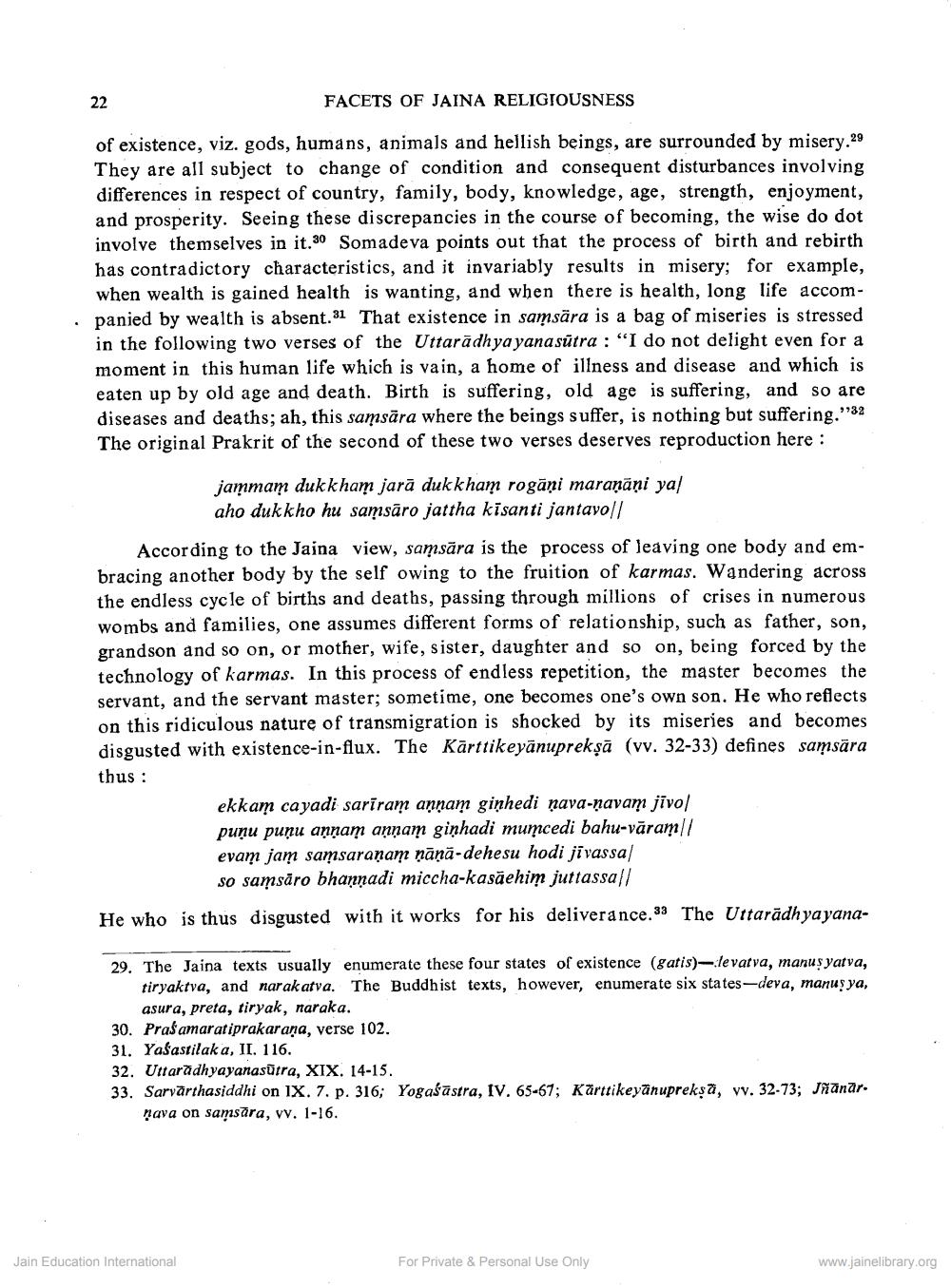________________
22
FACETS OF JAINA RELIGIOUSNESS
of existence, viz. gods, humans, animals and hellish beings, are surrounded by misery.29 They are all subject to change of condition and consequent disturbances involving differences in respect of country, family, body, knowledge, age, strength, enjoyment, and prosperity. Seeing these discrepancies in the course of becoming, the wise do dot involve themselves in it.30 Somadeva points out that the process of birth and rebirth has contradictory characteristics, and it invariably results in misery; for example, when wealth is gained health is wanting, and when there is health, long life accompanied by wealth is absent.31 That existence in samsära is a bag of miseries is stressed in the following two verses of the Uttarādhya yana sutra : “I do not delight even for a moment in this human life which is vain, a home of illness and disease and which is eaten up by old age and death. Birth is suffering, old age is suffering, and so are diseases and deaths; ah, this samsāra where the beings suffer, is nothing but suffering."32 The original Prakrit of the second of these two verses deserves reproduction here :
jammam dukkham jarā dukkham rogāņi maranäni ya/
aho dukkho hu samsāro jattha kisanti jantavo/ According to the Jaina view, samsāra is the process of leaving one body and embracing another body by the self owing to the fruition of karmas. Wandering across the endless cycle of births and deaths, passing through millions of crises in numerous wombs and families, one assumes different forms of relationship, such as father, son, grandson and so on, or mother, wife, sister, daughter and so on, being forced by the technology of karmas. In this process of endless repetition, the master becomes the servant, and the servant master; sometime, one becomes one's own son. He who reflects on this ridiculous nature of transmigration is shocked by its miseries and becomes disgusted with existence-in-flux. The Kārttikeyānuprekşā (vv. 32-33) defines samsāra thus :
ekkam cayadi sariram anņam ginhedi nava-navam jīvol puņu punu annam annam ginhadi mumcedi bahu-vāram// evam jam samsaranam nāņā-dehesu hodi jivassa/
so samsāro bhannadi miccha-kasăehim juttassa He who is thus disgusted with it works for his deliverance. 33 The Uttarādhyayana
29. The Jaina texts usually enumerate these four states of existence (gatis)-levatva, manus yatva,
tiryaktva, and narak atva. The Buddhist texts, however, enumerate six states-deva, manusya,
asura, preta, tiryak, naraka. 30. Praß amarat iprakarana, verse 102. 31. Yaśastilak a, II. 116. 32. Uttaradhyayanasūtra, XIX. 14-15. 33. Sarvārthasiddhi on IX. 7. p. 316; Yogaśāstra, IV. 65-67; Kārttikeyānupreksā, vv. 32-73; Jņānār.
nava on samsāra, vv. 1-16.
Jain Education International
For Private & Personal Use Only
www.jainelibrary.org




